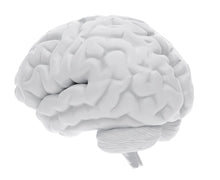
It’s not uncommon for someone who exercises to look younger than they are, but research shows exercise can affect brain function as well. A new study by scientists from the Center for Vital Longevity at the University of Texas at Dallas shows the brains of older people who engage in regular strenuous exercise more closely resemble those of younger adults.
Detailed in the journal Neuroscience, the study shows how exercise can improve a person’s ability to perform complex cognitive tasks and prolong neurological health. That’s good news for people wanting to keep their mind sharp as they age.
"Age is just one marker for cognitive health, and fitness can be a significant modifying factor," said Dr. Chandramallika Basak. "The brain activation patterns of high-fit older adults in our study resemble those of the young adults during a complex cognitive task that requires switching attention focus and updating memory rapidly. This suggests that physical fitness can significantly modify age-related changes in the brain.
"Our findings suggest that a lifestyle involving moderate to strenuous physical activity may help maintain cognitive processing in the prefrontal cortex of older adults that matches that of younger adults, while cardiorespiratory fitness may preserve neurovascular health of posterior brain regions," Basak added. "What we mean by strenuous physical activity is a level of physical activity that actually gets your heart rate up and increases your lung capacity."
The study consisted of 52 participants with varying levels of fitness. The older study subjects had a median age of 73 and were selected based on matching aspects such as blood pressure and general cognition. There was also a younger group of participants with an average age of 26.
The older study participants were separated based on their self-reported fitness level. They were asked about the frequency of engagement in activities such as jogging, swimming, cycling, singles tennis, aerobic dancing and skiing. Both high-fit and low-fit individuals were measured by scientists with functional MRI technology to assess changes in blood oxygen level-dependent signals as they performed several tasks involving a varying degrees of cognitive control.
The MRI scans showed the younger participants used one portion their brain while performing the tasks but activated other areas as the tasks became more demanding.
"Younger brains are more efficient. They don't need to work hard," Basak said. "They only need to use these extra resources when things get more difficult."
The older participants in the low-fit category used an overactivation of one portion of the brain but the high-fit individuals had a different response.
"What we found is that these high-fit older adults overactivated the dorsolateral prefrontal cortex only at moderate levels of task difficulty, whereas low-fit older participants used this region even for the simplest version of the task," Basak said. "Moreover, high-fit older adults compensated by activating another brain region, the superior parietal lobe. We found such protective effects in those subjects who regularly engaged in strenuous activity and exhibited high cardiorespiratory fitness, which compensates for the decline of cognition we normally see with age.â€



